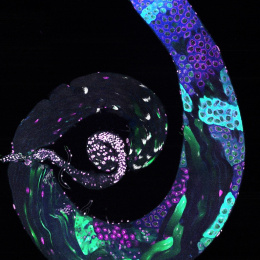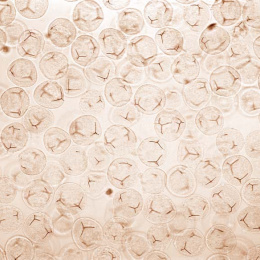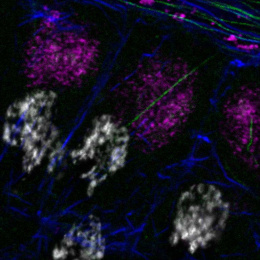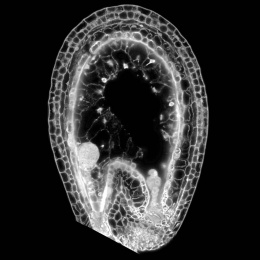Self-Organization of Stem Cells
Self-Organization of Stem Cells
Submitted by Patrick Guye of the Weiss Laboratory in the Synthetic Biology Center at MIT
MIT Department of Biology, MIT Department of Biological Engineering, Koch Institute at MIT, Synthetic Biology Center
At the very beginning of the development of a human body a small homogeneous mass of stem cells self-organizes and specializes to form precursors for our body parts (nerve system, digestive tract, muscles etc...). I'm developing a system to recapitulate early embryogenesis using human induced pluripotent stem cells (hiPSCs) in order to better understand the rules guiding our development and to finally generate complex, stable tissues and organoids for potential therapies in regenerative medicine.
Here we started with a single, homogeneous population of hiPSCs, and upon providing them with a little push, allowed them to self-organize and specialize in a cell culture dish. The green color marks the center of cells which decided to specialize to the nerve system. The red color marks the center of cells which will become part of the digestive tract. The blue color marks the center of all the cells and helps visualizing cells which have decided neither for nerve system or digestive tract. They might decide a bit later, or they have decided to become something completely else altogether (e.g. muscle/blood/heart precursors).






